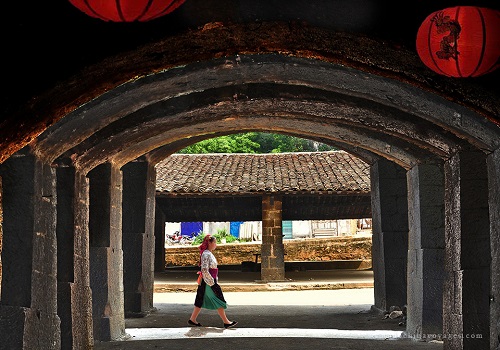Ha Giang, situated in the northern part of Vietnam, is a popular tourist destination. There are numerous exciting things to to in Ha Giang, such as exploring the stunning landscapes of hills adorned with various types of blooming flowers and terraced fields, as well as experiencing the cultural diversity of the locals. To plan a perfect Ha Giang tour, check out this travel guide.
Here is what you can expect from this travel guide:
- When is the best time to visit Ha Giang?
- How to get to Ha Giang from Hanoi?
- What to do in Ha Giang?
- Ha Giang accommodation
- Frequently asked question
- Beyond Ha Giang: Exploring Neighboring Destinations
When is the best time to visit Ha Giang?
The best time to visit Ha Giang is during the months of August to October and January to March. In August to October, you can witness the mesmerizing autumn colors as the rice terraces turn golden, creating a stunning backdrop for your visit. The weather during this time is generally pleasant, with cooler temperatures and a lower chance of rainfall.
Similarly, from January to March, Ha Giang experiences the spring season when the region blooms with vibrant flowers and lush greenery. The weather is mild, making it ideal for outdoor activities like trekking and exploring the local villages.
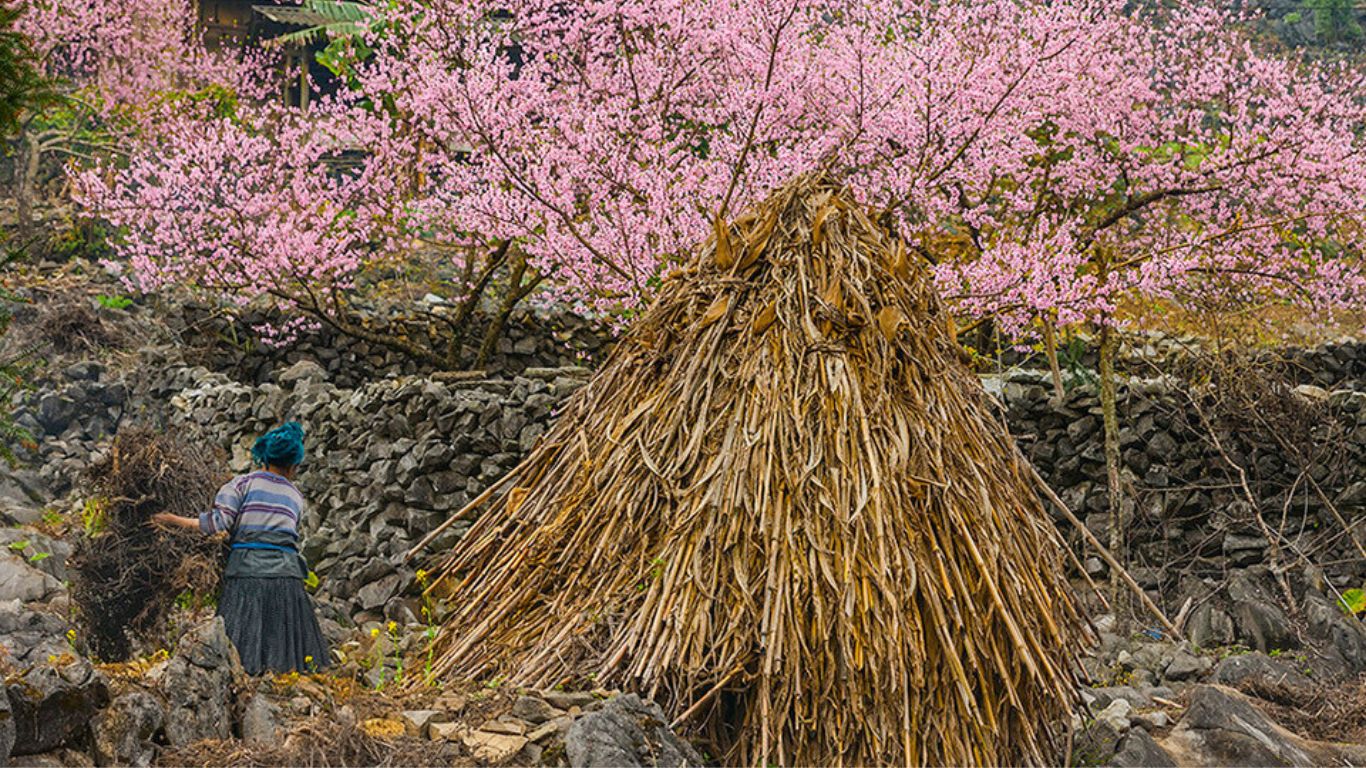
>>> Read more: Best time to travel to Ha Giang & Highlights by Season
How to get to Ha Giang from Hanoi?
Since the distance between Hanoi and Ha Giang is quite far (about 300km), the best option for travelers is to get there by private car.
Another budget option is to get to Ha Giang by bus. You can choose to take an express bus or a sleeper one. There are a variety of departure times during a day but it is suggested that you should take a night bus in order to reach to Ha Giang in the next morning. The price is quite reasonable, from VND 250,000 to VND 500,000 depending on the quality.
Once you arrive at the destination, the best way to discover this area is to rent a motorbike. Or alternatively, if you don’t want to drive your own vehicles to Ha Giang, you can have your motorbike delivered by the bus you take. However, remember to ask the company in advance to make sure there is enough space for your vehicle.
The option to use private cars or motorbikes are the best ways enjoy the views along the road. It takes about 8 to 10 hours to get to Ha Giang from Hanoi or maybe longer if you spend more time on taking rest or taking photos. The routine is fairly simple, just stick to the National Road 2. However, having GPS is also necessary in case you lose the way.’
>>> Read more: How to get from Ha Noi to Ha Giang? Road Trip Essentials and Tips
Ha Giang loop routes
The Ha Giang Loop isn’t just a road trip – it’s a legendary motorcycle journey that winds through the most spectacular mountain landscapes in Northern Vietnam. Typically, you have two main route options: a classic 4-day circuit and a more extended 5-6 day exploration. These routes traverse approximately 350 kilometers of challenging mountain roads, connecting some of the most remote and stunning regions of Vietnam’s northernmost province.
Day 1: Hanoi to Quan Ba
Begin your adventure with a journey from Hanoi to Quan Ba. As you climb into the mountains, you’ll witness the landscape transform dramatically. Quan Ba welcomes you with its twin mountains, known locally as the “Fairy Bosom,” offering breathtaking views that will make you stop and marvel at nature’s artistry.
Day 2: Exploring Dong Van Plateau – Meo Vac village
This day takes you through the legendary Dong Van Plateau, a UNESCO Global Geopark that feels like riding through the backbone of the earth. You’ll traverse the Ma Pi Leng Pass – often called the “King of Passes” – with views so spectacular they’ll take your breath away. The journey continues to Meo Vac, a remote town nestled among towering limestone mountains.
Day 3: Visit Meo Vac market on every Sunday – Relaxing by taking boat trip on Nho Que river
If you time your trip right, you’ll experience the famous Meo Vac Sunday market, a vibrant gathering of local ethnic minorities in their traditional costumes. For the adventurous, a boat trip along the emerald Nho Que River offers a different perspective of the landscape. Trekking options provide an even deeper connection to this remarkable region.
Day 4: Return Journey
Your final day winds through Quan Ba, Bac Me, and finally to Ha Giang City, completing the loop. Each kilometer brings a new perspective, a different view, and memories that will last a lifetime.
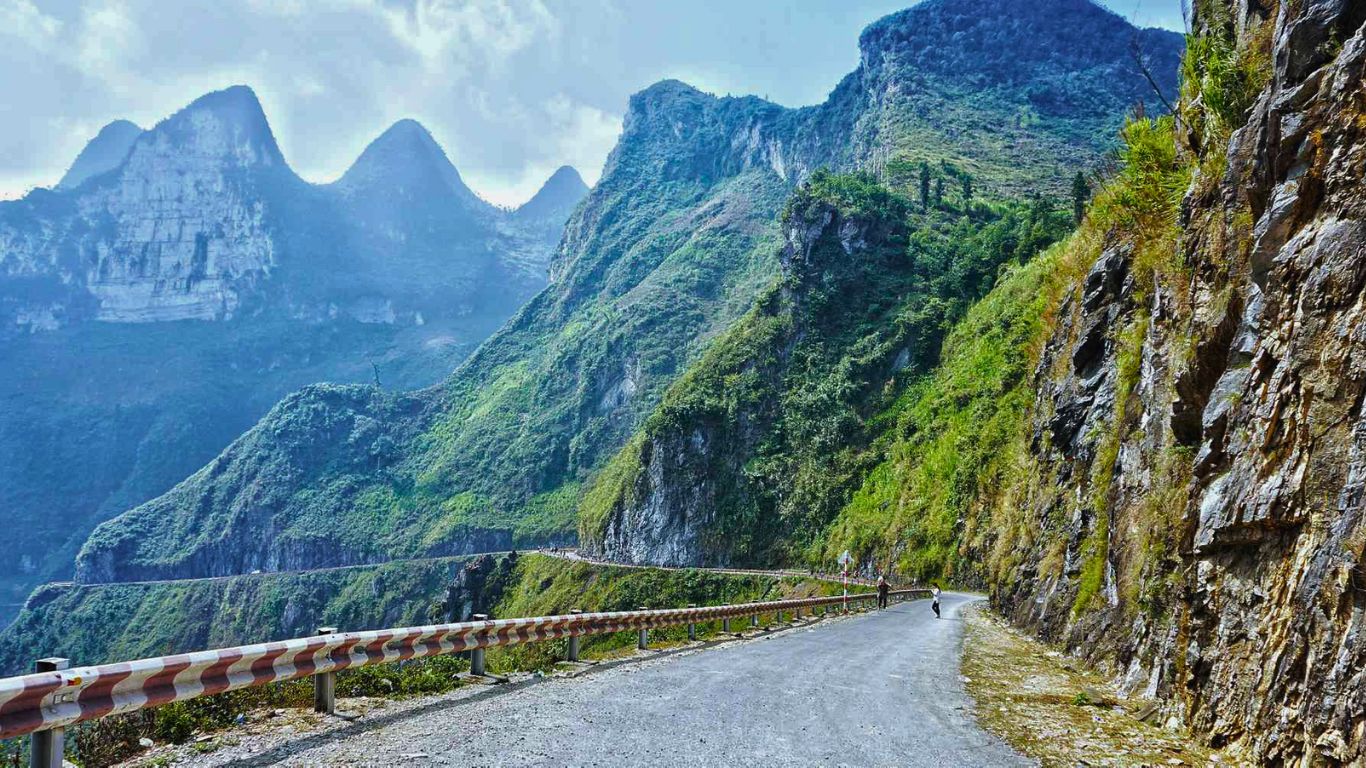
9 Highlights of Ha Giang
When planning your visit to Ha Giang, you’re in for a treat with an array of captivating things to do. From exploring ancient karst plateaus to immersing yourself in ethnic minority culture, here’s a guide to ensure you make the most of your time in this enchanting region.
Exploring the Dong Van Karst Plateau
Dong Van Karst Plateau beckons with its UNESCO World Heritage status and unique geological wonders. Start your adventure by wandering through ancient villages, soaking in the rich history, and marveling at the breathtaking landscapes that have stood the test of time.

Discovering the Hoang Su Phi terraced fields
A visit to Ha Giang isn’t complete without witnessing the mesmerizing beauty of the Hoang Su Phi Terraced Fields. Plan your trip during the rice planting or harvesting season to witness the terraces adorned in vibrant hues, creating a picturesque backdrop you won’t soon forget.

Immersing yourself in ethnic minority culture
Step into a world of cultural diversity by exploring the ethnic minority villages scattered across Ha Giang province. Stay in traditional homestays, savoring authentic cuisine, and participating in cultural activities to gain insight into the rich tapestry of local traditions and customs.
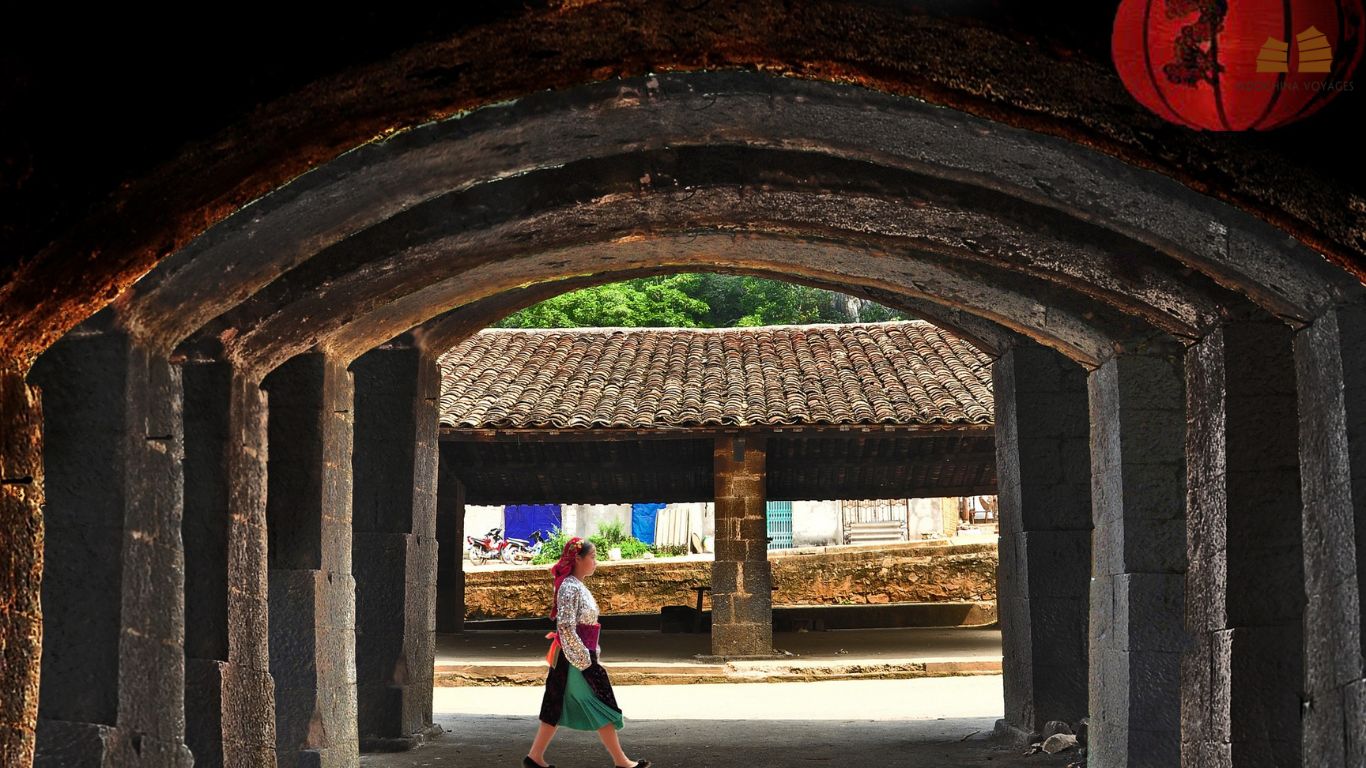
Trekking through beautiful villages
For nature lovers and outdoor enthusiasts, trekking through the lush landscapes of Ha Giang is a must-do activity. You can take a short trek along the beautiful village of Phuong Do to Thon Tha. Then, continue to feast your eyes with splendid views along the ride until we get to Quan Ba, which is home to Dao and Tay minorities, seasonal farmlands, and verdant hillocks. You can do some hiking on a green and dirt track to walk to some villages and discover their daily life.

>>> Read more: Ha Giang trekking tour – The best way to get off-the-beaten-track
Experiencing a local market
Indulge your senses at one of the bustling local markets in Ha Giang province. Explore the vibrant stalls, sampling fresh produce, and interacting with friendly vendors as you immerse yourself in the sights, sounds, and smells of authentic Vietnamese culture.
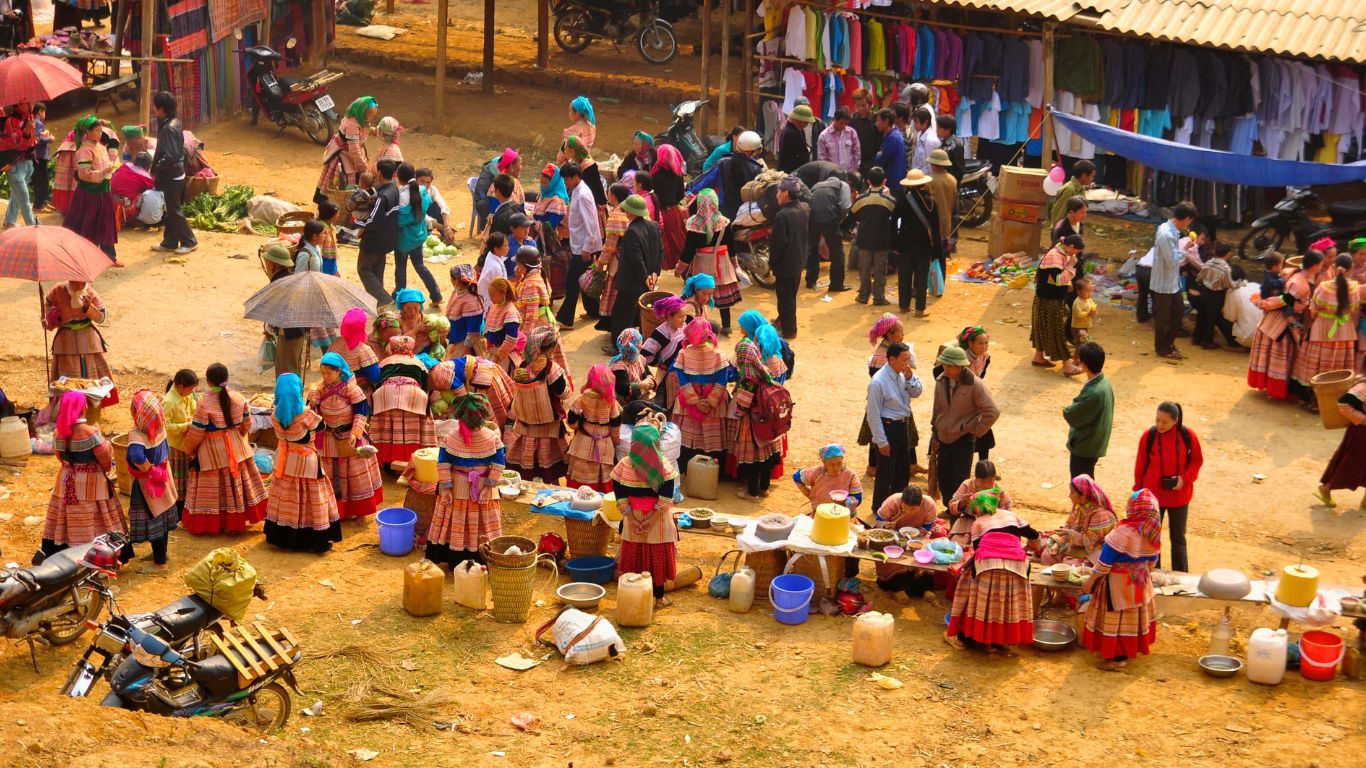
Learn about Hmong Indigo dyeing
Delve into the traditional art of Hmong indigo dyeing by visiting local workshops and observing the intricate dyeing process. Take home a piece of Ha Giang with handmade textiles dyed with natural indigo plants, serving as a unique and meaningful souvenir of your trip. You can visit line weaving Lung Tam village where you see women are really dedicated to making beautiful line products.

Kayaking on the Nho Que river
For a thrilling adventure on the water, head to the Nho Que River for a kayaking excursion. Paddle through crystal-clear waters, surrounded by towering limestone cliffs and lush greenery, as you soak in the stunning natural scenery of Ha Giang.
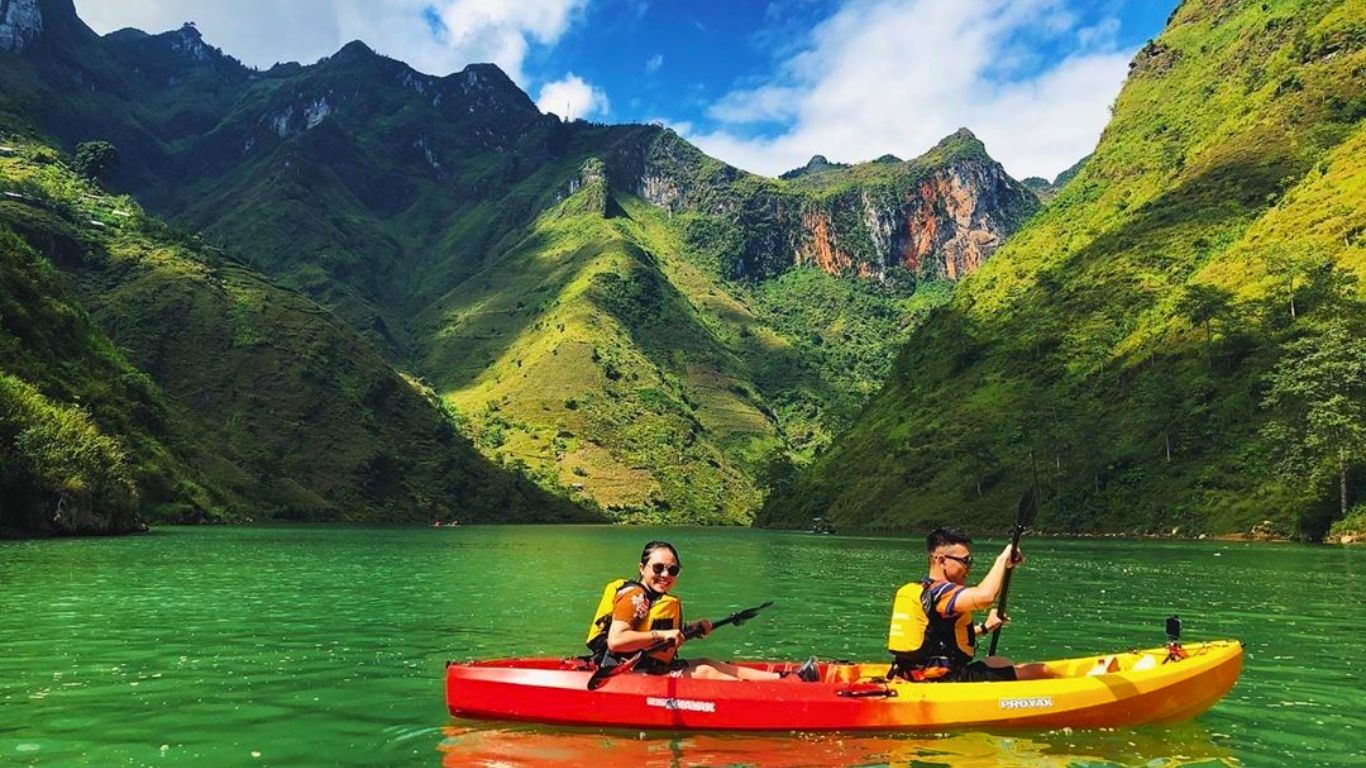
Hike to the Du Gia Waterfall
When visiting Du Gia Waterfall, you can expect a breathtaking natural beauty that will leave you in awe. The waterfall is surrounded by lush greenery, adding to the serene and peaceful atmosphere. You can take a refreshing dip in the cool waters of the waterfall, capturing beautiful moments and photographs. It’s a perfect spot to relax and enjoy a picnic amidst nature’s beauty. You can sit on the rocks, listen to the sound of water, and soak in the peaceful ambiance.

Visit the Ma Pi Leng Pass Viewpoint
No visit to Ha Giang is complete without a stop at the Ma Pi Leng Pass Viewpoint. Marvel at the breathtaking panoramic views of the rugged mountains and deep valleys below, capturing memories that will last a lifetime.

Ha Giang accommodation
Where to stay in Ha Giang is an important question you need to answer before your trip to this site. There are 3 kinds of accommodation in Ha Giang you can take into consideration: hotel, guesthouse, and homestay.
If you want to use more qualified facilities and professional service, hotels are the best option for you though hotels in Ha Giang are not as modern as those in big cities. Guesthouses are for a more reasonably priced service, however, most domestic backpackers choose to stay overnight there, so it is not as a good choice. Yet for those who are interested in the local culture, staying in a homestay will give opportunities to know more about the daily lives of ethnic groups as well as their special dishes.
Visitors often take a rest at Dong Van Plateau to enjoy interesting activities; but in case of having no room left, you can think of moving to nearby places like Lung Cu and Pho Bang, or even further – Meo Vac.
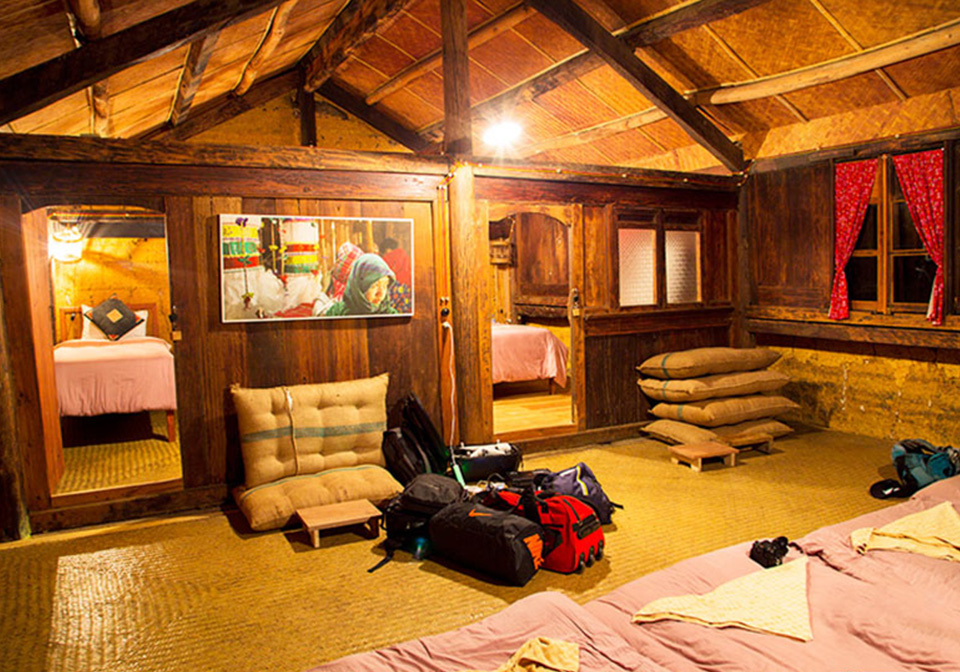
Frequently asked question
Is the Ha Giang loop scary?
The Ha Giang Loop is known for its winding and narrow roads, steep cliffs, and occasional rough patches. The road conditions can be challenging, especially during the rainy season when there might be mudslides or slippery surfaces. Additionally, some sections of the road require careful navigation due to sharp turns and steep inclines.
For experienced and confident motorbike riders, the Ha Giang Loop can be an exhilarating and rewarding experience. However, if you are not comfortable riding a motorbike or have limited experience with challenging road conditions, it may be wise to consider other transportation options or hire an experienced local guide to navigate the route for you.
How many days in the Ha Giang loop?
To complete the entire loop and visit the main attractions along the way, most travelers allocate around 3 to 5 days. This allows for a more relaxed pace, with time to stop at viewpoints, interact with local communities, and enjoy the natural beauty of the region.
However, if you have limited time, it is still possible to experience the highlights of Ha Giang in a shorter period. A 2-day trip can cover some of the essential stops along the loop, such as Dong Van Karst Plateau Geopark, Ma Pi Leng Pass, and Meo Vac Market. Keep in mind that this will be a more condensed itinerary, and you may not have as much time for exploration and immersion.
Is the Ha Giang Loop too touristy?
The Ha Giang Loop has become a popular destination among travelers in Vietnam due to its stunning landscapes and sense of adventure. While it is not as heavily touristy as some other destinations, it is important to note that the level of tourism can change over time.
Compared to Sapa, the Ha Giang Loop generally remains less crowded. Its remote location and challenging road conditions have helped preserve its authenticity and keep mass tourism. However, during peak travel seasons, the most popular viewpoints and attractions could become more crowded. To enjoy a quieter experience, it is advisable to plan your trip accordingly and avoid major holidays or weekends.
If you want to explore off-the-beaten-path areas, consider venturing deeper into the rural villages or alternative routes. By doing so, you can have a more authentic experience while enjoying the natural beauty of the region. It is also recommended to arrange your trip with a local travel expert, as they can provide a well-prepared itinerary and help you overcome any language barriers. The local people in Ha Giang are not fluent in English yet.
Are there mosquitoes in Ha Giang?
Yes, there can be mosquitoes in Ha Giang, particularly during the warmer and wetter months. To ensure that you are aware of the current situation, it is recommended that you stay informed and seek advice from local authorities or healthcare professionals. This will provide you with more specific and up-to-date information regarding the presence of mosquitoes and any associated risks in Ha Giang or any other destination you plan to visit.
Beyond Ha Giang: Exploring Neighboring Destinations
Ha Giang is a beautiful destination in itself, but exploring the neighboring areas can offer even more wonders. From the stunning landscapes of Sapa to the peacefulness of Mai Chau, there are plenty of places to enhance your Vietnam experience.
If you’re looking for a more off-the-beaten-path adventure, head to Cao Bang. This hidden gem in the northern mountainous region boasts breathtaking natural beauty, including attractions such as Ban Gioc Waterfall, Nguom Ngao Cave, and ancient villages.
>>> Read more: 15+ things to do in Sapa Vietnam: Ultimate Travel Guide
Suggested Ha Giang tours
Here are some of our itinerary ideas as a general suggestion, and you can customize it based on your preferences, available time, and specific interests:
- Insightful Northwest Adventure 7 Days
- Northeast Vietnam Explorer 7 Days
- Explore the Trails of Ha Giang 5 days
Ha Giang loop offers various things to do for travelers seeking adventure, natural beauty, and cultural immersion. From the stunning landscapes of the Dong Van Karst Plateau to the vibrant markets and warm hospitality of ethnic communities, Ha Giang has it all. With this comprehensive travel guide and insider tips, you’re well-equipped to explore and make the most of your Ha Giang experience. Discover the hidden treasures, embrace the local culture, and create memories that will last a lifetime in Ha Giang.
Other tours you might consider

 Ha Giang - Quan Ba - Dong Van - Meo Vac - Hoang Su Phi - Bac Ha - Sapa
Ha Giang - Quan Ba - Dong Van - Meo Vac - Hoang Su Phi - Bac Ha - Sapa - Cultural, history & local learning
- Photography interest
- Eco & nature lovers
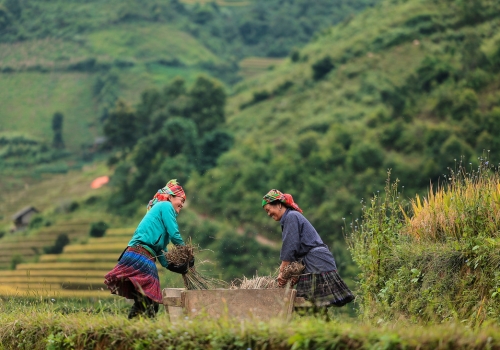
 Hanoi - Ha Giang - Dong Van - Meo Vac - Bao Lac - Ban Gioc - Ba Be Lake
Hanoi - Ha Giang - Dong Van - Meo Vac - Bao Lac - Ban Gioc - Ba Be Lake - Cultural, history & local learning
- Photography interest
- Eco & nature lovers




